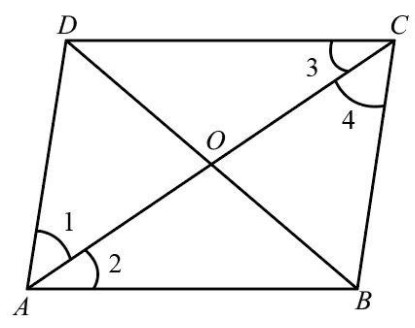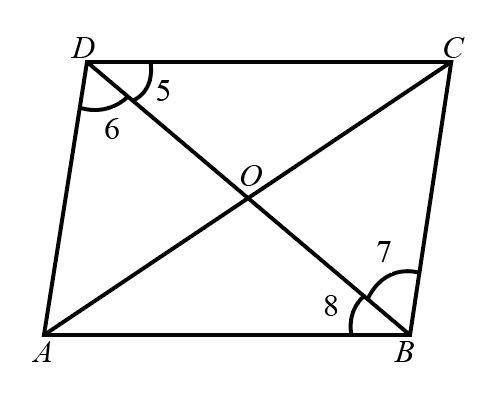Question
Question: \(ABCD\) is a rhombus. Show that diagonal \(AC\) bisects \(\angle A\) as well as \(\angle C\) and di...
ABCD is a rhombus. Show that diagonal AC bisects ∠A as well as ∠C and diagonal BD bisects ∠B as well as ∠D.
Solution
All the sides of a rhombus are equal and the opposite sides are parallel to each other. Also, in a rhombus the angles opposite to equal sides are always equal.
Complete step by step solution:
The following is the schematic diagram of a rhombus.

Consider ΔABC,
Since all the sides of rhombus are equal, therefore
AB=BC
The angles opposite to the sides AB and BC will be equal. hence
∠4=∠2.….(i)
Also AD∥BC with transversal AC, as AD and BC are opposite sides of rhombus and opposite sides of rhombus are parallel to each other. Hence alternate angles will be equal.
∠1=∠4……(ii)
From equation (i) and (ii).
∠1=∠2
Hence, it is clear that AC bisects the angle ∠A.
Now AB∥DC with transversal AC, as AB and DC are opposite sides of rhombus and opposite sides of rhombus are parallel to each other. Hence alternate angles will be equal.
∠2=∠3……(iii)
From equation (i) and (iii).
∠4=∠3
Hence, it is clear that AC bisects the angle ∠C.
Therefore AC bisects angles ∠A and ∠C.
Since CD and BC are the sides of rhombus, therefore CD=BC.
The following is the schematic diagram of a rhombus.

The angles opposite to the sides CD and BC will be equal. hence
∠5=∠7..….(iv)
Also AB∥CD with transversal BD , as AB and CD are opposite sides of rhombus and opposite sides of rhombus are parallel to each other. Hence alternate angles will be equal.
∠5=∠8……(v)
From equation (iv) and (v).
∠7=∠8
Hence BD bisects the angle ∠B.
Now AD∥BC with transversal BD, as AD and BC are opposite sides of rhombus and opposite sides of rhombus are parallel to each other. Hence alternate angles will be equal.
∠6=∠7……(vi)
From equation (v) and (vi).
∠5=∠6
Hence BD bisects the angle ∠D.
Therefore BD bisects angles ∠B and ∠D.
Note: Angle bisector divides the angle in two equal angles. Make sure to use the properties of rhombus in the solution.
